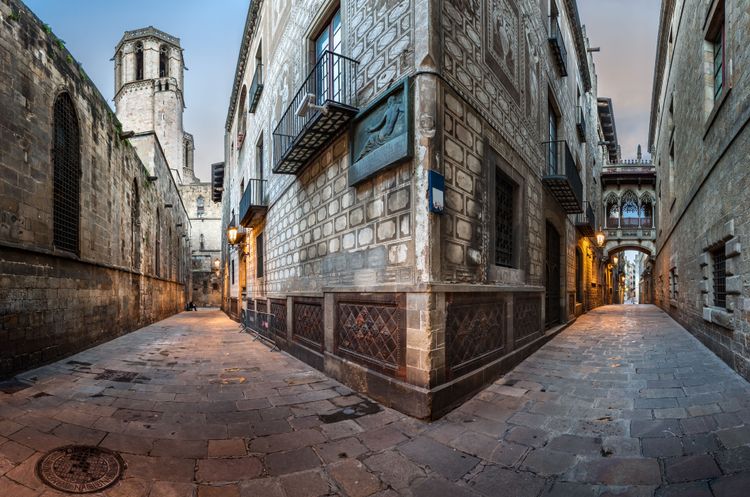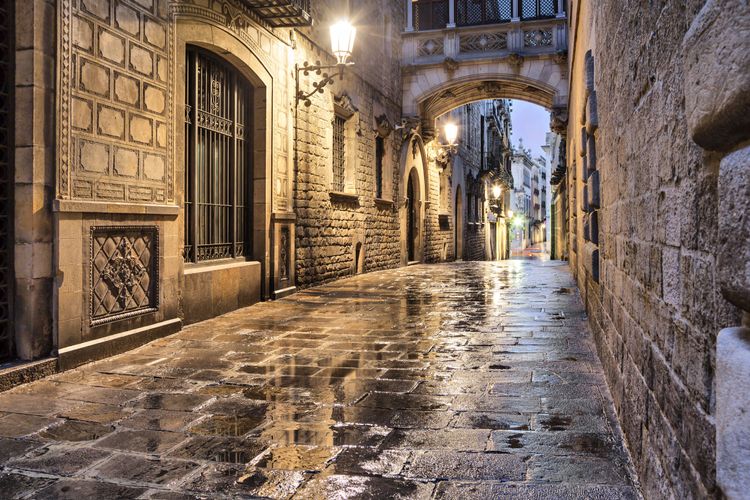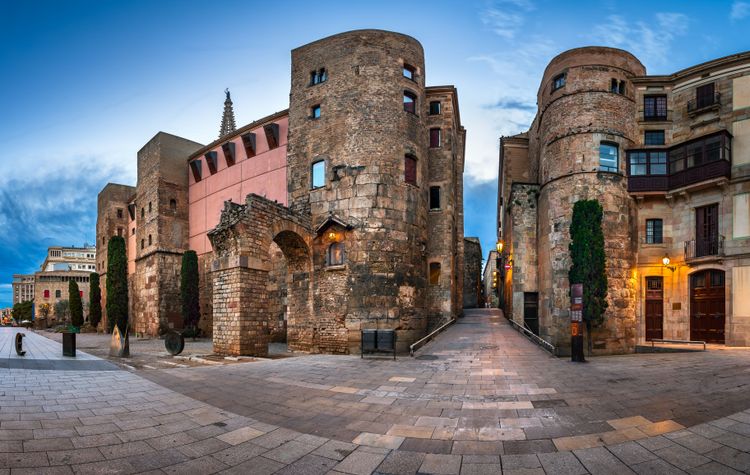The Jewish Quarter
From 70 AD a small Jewish community settled in Barcelona, fleeing the repression and war in Palestine in the first Jewish-Christian war. From then on, the Call, as this Jewish quarter is called in Catalan, began to be created, which at one point became the largest in Catalonia, with a community that made up 15% of the population.
The history of this neighbourhood is complicated and often tragic, with anti-Semitic attacks and much discrimination. Here you can visit the MUHBA El Call, which tells the story of Barcelona's Jewish community in relation to the history of the city and the splendour of its cultural legacy.
The Plaça Reial
The Plaça Reial is an excellent place to start or end your tour of the Gothic Quarter, as it adjoins Las Ramblas.
Named after the Catholic Monarchs, construction began in 1850 on what was once the site of a convent. It was the work of the architect Francisco Daniel Molina and is highly praised because the way it is built creates an optical illusion that makes it appear quadrangular rather than rectangular. It has passages that connect the streets of the medieval fabric and thus create a flow between the interior and exterior of the square.
The City Wall
The ancient city wall was built between the 1st and 4th century BC and a large part of it is still standing and can be visited. Various remains have been preserved, especially in the northern and eastern parts. In the Piazza Nuova, where the Praetoria gate was located, the best preserved parts are to be found, with two towers, part of the perimeter wall and an arcade of the old aqueduct.
Around this square there are many old houses and small streets that are well worth a walk.
The whole Gothic Quarter is a spectacle of time in pause and architecture from other eras, which, despite not being there since the beginning of time, are an axis of the culture of this city and show a different, more conservative aspect of Barcelona.










